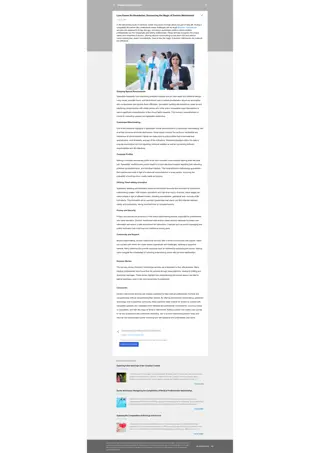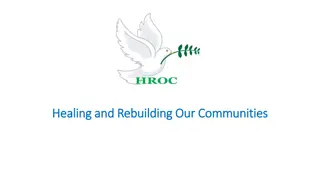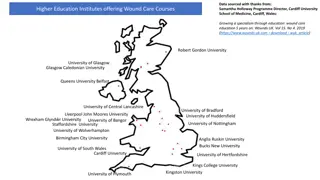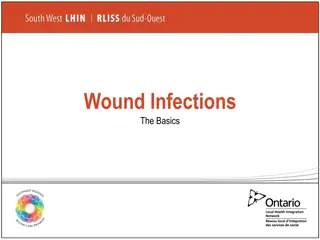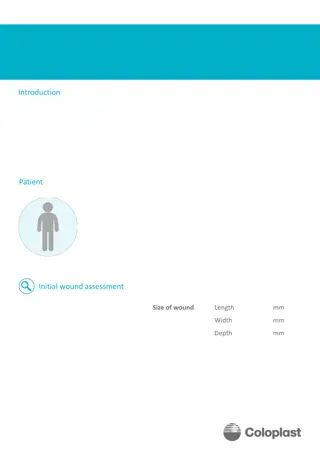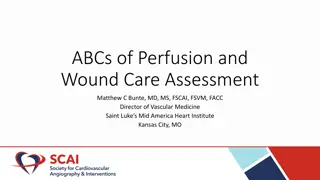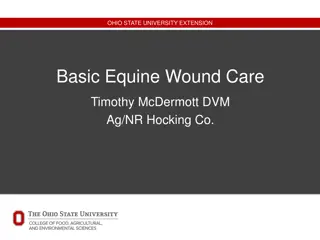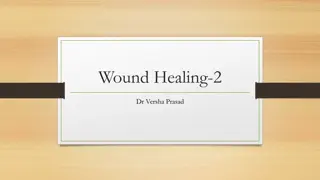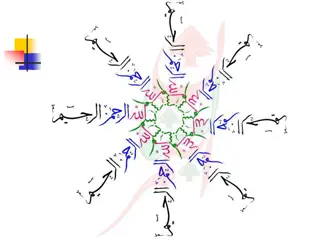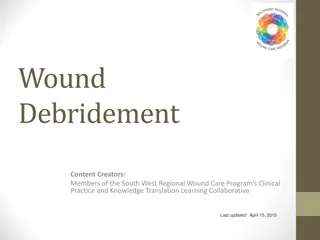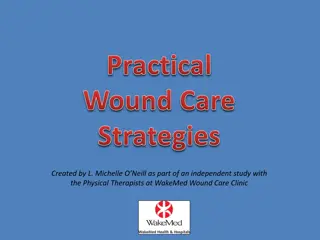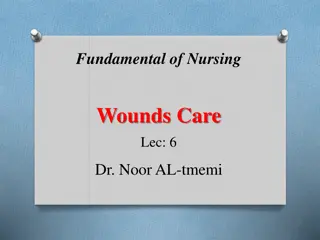
Phases of Wound Healing Process
Explore the stages of wound healing, from hemostasis to maturation, and learn about the complexities involved in each phase. Discover the importance of proper wound care and the potential risks associated with abnormal healing.
Download Presentation

Please find below an Image/Link to download the presentation.
The content on the website is provided AS IS for your information and personal use only. It may not be sold, licensed, or shared on other websites without obtaining consent from the author. If you encounter any issues during the download, it is possible that the publisher has removed the file from their server.
You are allowed to download the files provided on this website for personal or commercial use, subject to the condition that they are used lawfully. All files are the property of their respective owners.
The content on the website is provided AS IS for your information and personal use only. It may not be sold, licensed, or shared on other websites without obtaining consent from the author.
E N D
Presentation Transcript
StudyMafia.Org Stages Of Wound Healing Submitted To: Studymafia.org Studymafia.org Submitted By:
Table Contents Introduction Types of Wounds Stages of Wounds Healing Hemostasis Phase Inflammatory Phase Proliferative Phase Maturation Phase Conclusion 2
Introduction A skin wound results from the breakdown of the epidermal layer integrity: Wound healing mostly means healing of the skin. Begins immediately after an injury to the epidermal layer and might take years. Dynamic process including highly organized cellular, humoral, and molecular mechanisms. Has 3 overlapping phases which are inflammation, proliferation, and remodelling. Any disruption leads to abnormal wound healing. 3
Types of Wounds Wounds can be separated into open or closed wounds: Closed Wound: The surface of the skin is intact, but the underlying tissues may be damaged. e.g. contusions, haematomas. Open Wounds: the skin is split or cracked and the underlying tissues are exposed to the outside environment. 5
Stages of Wound Healing The stages of wound healing proceed in an organized way and follow four processes: hemostasis, inflammation, proliferation and maturation. Although the stages of wound healing are linear, wounds can progress backward or forward depending on internal and external patient conditions. 6
Hemostasis Phase Hemostasis is the process of the wound being closed by clotting. Hemostasis starts when blood leaks out of the body. The first step of hemostasis is when blood vessels constrict to restrict the blood flow. Next, platelets stick together in order to seal the break in the wall of the blood vessel. Finally, coagulation occurs and reinforces the platelet plug with threads of fibrin which are like a molecular binding agent. The hemostasis stage of wound healing happens very quickly. 7
Hemostasis Phase The formation of a thrombus or clot keeps the platelets and blood cells trapped in the wound area. The thrombus is generally important in the stages of wound healing but becomes a problem if it detaches from the vessel wall and goes through the circulatory system, possibly causing a stroke, pulmonary embolism or heart attack. 8
Inflammatory Phase Inflammation is the second stage of wound healing and begins right after the injury when the injured blood vessels leak transudate (made of water, salt, and protein) causing localized swelling. Inflammation both controls bleeding and prevents infection. The fluid engorgement allows healing and repair cells to move to the site of the wound. 10
Inflammatory Phase During the inflammatory phase, damaged cells, pathogens, and bacteria are removed from the wound area. These white blood cells, growth factors, nutrients and enzymes create the swelling, heat, pain and redness commonly seen during this stage of wound healing. Inflammation is a natural part of the wound healing process and only problematic if prolonged or excessive. 11
Proliferative Phase The proliferative phase of wound healing is when the wound is rebuilt with new tissue made up of collagen and extracellular matrix. In the proliferative phase, the wound contracts as new tissues are built. Myofibroblasts cause the wound to contract by gripping the wound edges and pulling them together using a mechanism similar to that of smooth muscle cells. 13
Proliferative Phase It is important to remember that epithelialization happens faster when wounds are kept moist and hydrated. Generally, when occlusive or semiocclusive dressings are applied within 48 hours after injury, they will maintain correct tissue humidity to optimize epithelialization. 14
Maturation Phase Also called the remodeling stage of wound healing, the maturation phase is when collagen is remodeled from type III to type I and the wound fully closes. The cells that had been used to repair the wound but which are no longer needed are removed by apoptosis, or programmed cell death. 16
Maturation Phase Generally, remodeling begins about 21 days after an injury and can continue for a year or more. Even with cross-linking, healed wound areas continue to be weaker than uninjured skin, generally only having 80% of the tensile strength of unwounded skin. 17
Conclusion The stages of wound healing are a complex and fragile process. Failure to progress in the stages of wound healing can lead to chronic wounds. Factors that lead up to chronic wounds are venous disease, infection, diabetes and metabolic deficiencies of the elderly. 19
References Google.com Wikipedia.org Studymafia.org Slidespanda.com
Thanks To StudyMafia.org




